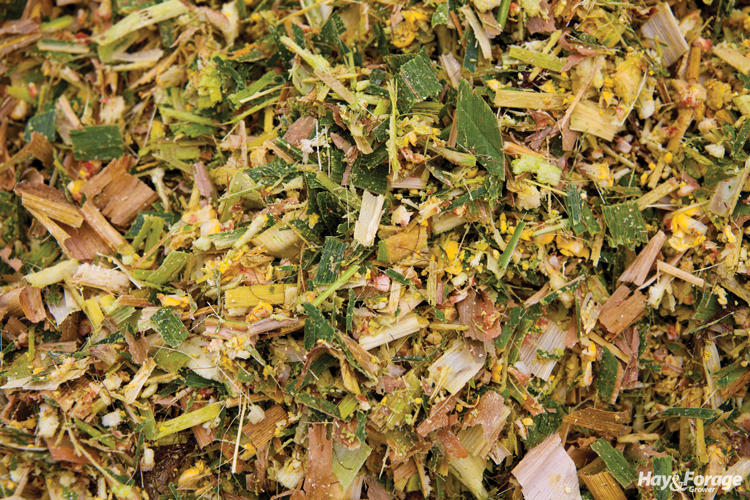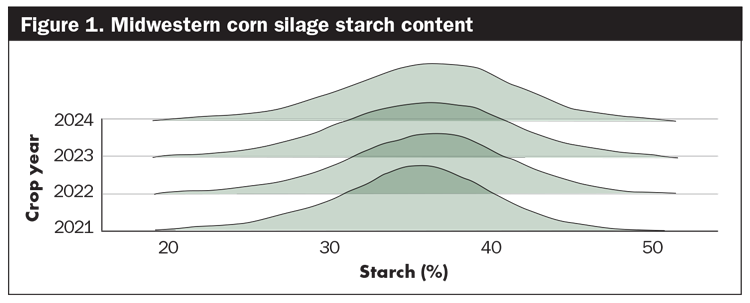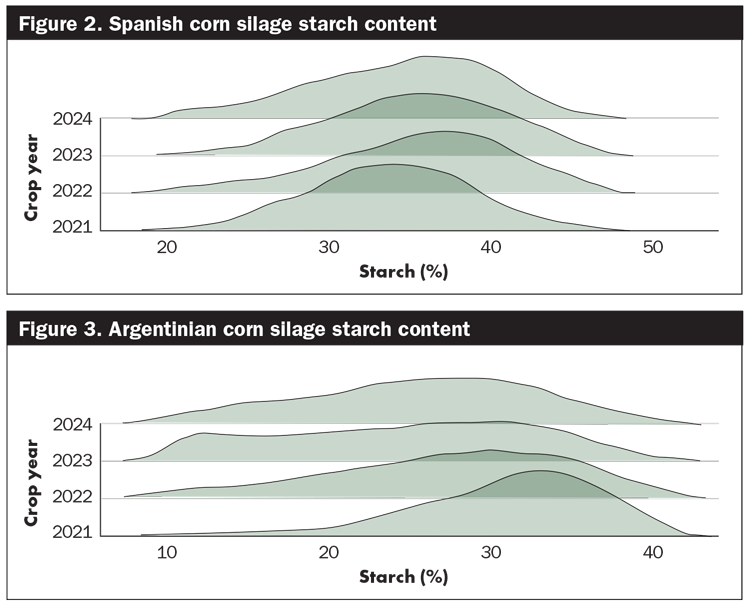Corn silage comparisons here and abroad |
| By John Goeser |
|
|
|
The author is the director of nutrition research and innovation with Rock River Lab Inc., and an adjunct assistant professor, University of Wisconsin-Madison.  With the elections now in the rearview mirror, we all readily recall the nation’s focus on domestic issues and policy. Foreign policy also made headlines, given the United States’ continued and extensive involvement in global affairs dating back all the way to the 1944 Bretton Woods agreement. Frankly, it’s virtually impossible to fully separate domestic and foreign policy. I think we should extend this concept to forage quality discussions and interweave global forage quality trends with the U.S. annual crop quality review. Over the past decade and around this time of the year, we’ve taken a look at the new corn silage and alfalfa crop forage quality. Year-over-year forage hygiene and quality trends drive discussions between growers, feeders, and nutritionists. Our field of view is typically state level or regional; however, the dairy and beef industries are influenced by global supply and demand. Hence, it’s logical to consider global forage quality trends as we take a look at 2024 corn silage crop quality closer to home. Averages seen stateside The 2024 growing season continued to follow the script of the past two or three years across the U.S. in that wide-ranging environmental and growing conditions impacted the resulting crops’ yield and quality. Mike Rankin and Mike Hutjens extensively covered the 2024 U.S. crop quality outcome and feed and forage outlook for the year ahead in the November Hoard’s Dairyman monthly webinar, which is available to stream.  Expanding on that content, we’ve noted that the 2024 outcome was like a spotted cow. There were mixed analyses, with Rock River Laboratory Inc. corn silage samples showing Midwestern corn silage fiber digestibility dipping lower but Western corn silage fiber digestibility trending in the opposite direction. Roughly two-thirds of the energy in silage lies in the grain, with both starch content and rumen starch digestibility influencing feed value. The 2024 corn silage starch digestibility has notably improved relative to this same point in time in prior years. Growers are noting lighter test weights, which corroborates the improved starch digestibility as softer and lighter corn tends to feed better. The net energy value outcome for 2024 corn silage will be average overall. Thankfully, substantial mycotoxin contamination doesn’t appear to be a great threat in this year’s silage, though there will be pockets of bad corn or silage. In this same vein, I expect wide-ranging quality variation within a farm given the continued tumultuous growing conditions many experienced in 2024. Stepping away from domestic quality discussions, let’s tap into Spain and Argentina databases for some intercontinental insights.  A mixed bag overseas Spain and Argentina represent vastly different regions, climates, and hemispheres. To round out this article and give you a global perspective for silage quality, let’s look at the last few years’ trends in silage quality in Europe and South America. Starch and fiber are the starting points to define silage quality, and the growing conditions abroad affect silage quality just like they do here in the U.S. In Spain, growing conditions have ranged over the past few years similar to what we’ve experienced in the states. During the past few months, extensive rain and flooding in some regions have proved challenging to harvest the new crop; however, Spain’s silage quality and starch content has held up quite well. You can see in Figure 2 that Spanish silage looks much like ours here in the Midwest (Figure 1) or Eastern U.S., with a healthy starch content. Alternatively, South American growers and regions of Argentina have farmed through substantial droughts the past couple of years. The impact is evident, as silage starch content has trended well below 30% for the past two crop years with wide-ranging quality as well (Figure 3). With a global perspective now in mind, compare and contrast your silage quality with both neighboring farmers and international countries. Remember that starch and fiber content — and thus starch and fiber digestibility — are the four keys to quality on your forage analysis. We can’t control the growing conditions, but we can keep pursuing ideal genetics and the best soil fertility, crop protection, and practices to optimize corn silage in the years to come. This article appeared in the January 2025 issue of Hay & Forage Grower on pages 10-11. Not a subscriber?Click to get the print magazine. |
